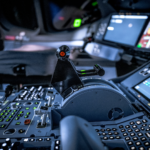In today’s ever-evolving creative landscape, filmmakers have access to a wide array of digital tools that streamline the production process from concept to final cut. These tools not only enhance the quality of the final product but also improve collaboration, save time, and reduce costs. Whether you’re an independent filmmaker, a YouTuber, or part of a large production house, leveraging the right software is crucial to staying competitive in the digital age.
The modern production environment demands efficiency, organization, and seamless communication. Film production software is now a central pillar for managing everything from scriptwriting and scheduling to post-production and distribution. Creators who embrace these technologies can expect a smoother workflow, greater creative freedom, and better results. Today’s filmmakers understand that investing in the best film production management software is no longer optional—it’s a necessary step to thrive in a digital-first industry.
Pre-Production Tools for Planning Success
The first stage of any film project is pre-production—a critical phase where ideas begin to take shape and logistics are carefully planned. Pre-production software helps filmmakers manage their scripts, budgets, schedules, locations, and talent coordination with precision.
These platforms often include features like drag-and-drop scheduling, script breakdowns, scene planning, and collaboration tools. Writers and producers can simultaneously work on the same script, revise drafts, and share feedback in real-time. Digital storyboard tools also help visualize scenes before filming, making it easier for directors to communicate their vision.
Popular tools in this category include StudioBinder, Celtx, and Movie Magic Scheduling. These software solutions bring structure to the chaotic early stages of filmmaking, allowing teams to focus on creative development while staying organized.
Production Software to Keep Shoots on Track
Once production begins, timing, coordination, and adaptability become essential. Film production software built for this stage allows teams to execute their plans with accuracy and speed. On-set tools ensure that everyone—from the director to the lighting crew—is aligned on the day’s goals.
Production management platforms provide real-time dashboards, digital call sheets, and daily shooting reports. Many are mobile-friendly, enabling location shoots to proceed smoothly with up-to-the-minute updates. Integration with pre-production plans ensures continuity, while asset tracking features prevent loss or duplication of important gear.
Camera and Equipment Management
Handling gear and managing rentals can be a logistical nightmare without the right systems in place. Equipment tracking software provides an organized way to manage inventory, log usage, track maintenance, and assign items to specific shoot dates.
These systems are especially valuable for mid-to-large productions where multiple cameras, rigs, lighting kits, and audio gear are in circulation. Reducing human error with automated tracking ensures that every piece of equipment is where it needs to be—when it’s needed most.
Team Communication and Collaboration
Effective communication on set is essential. Miscommunication can lead to delays, increased costs, and even missed shots. Software tools like Slack, Basecamp, and Trello are widely used to enhance communication among team members. They allow for centralized messaging, file sharing, task assignment, and production notes—all in one place.
These platforms create a collaborative ecosystem where everyone can contribute to the creative process, share feedback, and stay informed without needing to sift through emails or paper notes.
Post-Production Software to Perfect Your Vision
Post-production is where all the footage comes together to tell a cohesive, compelling story. Video editing software is the heart of this phase, but it’s often supported by tools for sound editing, color grading, and visual effects.
Top editing programs like Adobe Premiere Pro, Final Cut Pro X, and DaVinci Resolve offer powerful timelines, real-time previews, and extensive plugin libraries. Editors can cut and assemble footage with ease, layer audio and music tracks, apply visual filters, and export in high-definition formats.
Sound design and mixing software like Avid Pro Tools or Adobe Audition help shape the auditory experience. From removing background noise to adding ambient effects, audio tools allow for a polished and immersive final product.
Visual Effects and Motion Graphics
For projects that require more than just cuts and transitions, visual effects (VFX) software steps in. Tools like Adobe After Effects and Blender enable the creation of motion graphics, 3D models, and complex animations. VFX artists can bring a futuristic city to life, simulate explosions, or build entire worlds digitally.
These tools expand the creative possibilities of filmmakers, offering limitless options for enhancing the narrative and visual storytelling.
Essential Features in Film Production Management Software
Choosing the right software can be overwhelming with so many options on the market. A great film production management platform should integrate smoothly into your workflow, providing tools for every phase of production.
Key features to look for include:
-
Script breakdown and production scheduling
-
Budgeting, cost estimates, and expense tracking
-
Digital call sheets and crew management
-
Centralized document storage and sharing
-
Equipment tracking and rental coordination
-
Calendar syncing and mobile accessibility
These capabilities make production more transparent, reduce administrative burden, and improve coordination across departments. The best film production management software empowers creative teams by giving them control and clarity throughout the filmmaking journey.
Conclusion
The future of filmmaking lies in smart, efficient workflows powered by the latest software tools. With the right film production software, creators can transform their ideas into reality while overcoming the traditional obstacles of time, cost, and coordination. From pre-production planning to post-production editing, digital platforms provide an integrated approach that enhances every step of the creative process.
Filmmakers today are not just artists—they are project managers, tech-savvy collaborators, and storytellers. By choosing the best tools for the job, they can focus on what matters most: telling powerful stories that connect with audiences. Whether you’re a beginner or a seasoned director, the right software can be your most valuable asset in bringing your vision to life.



